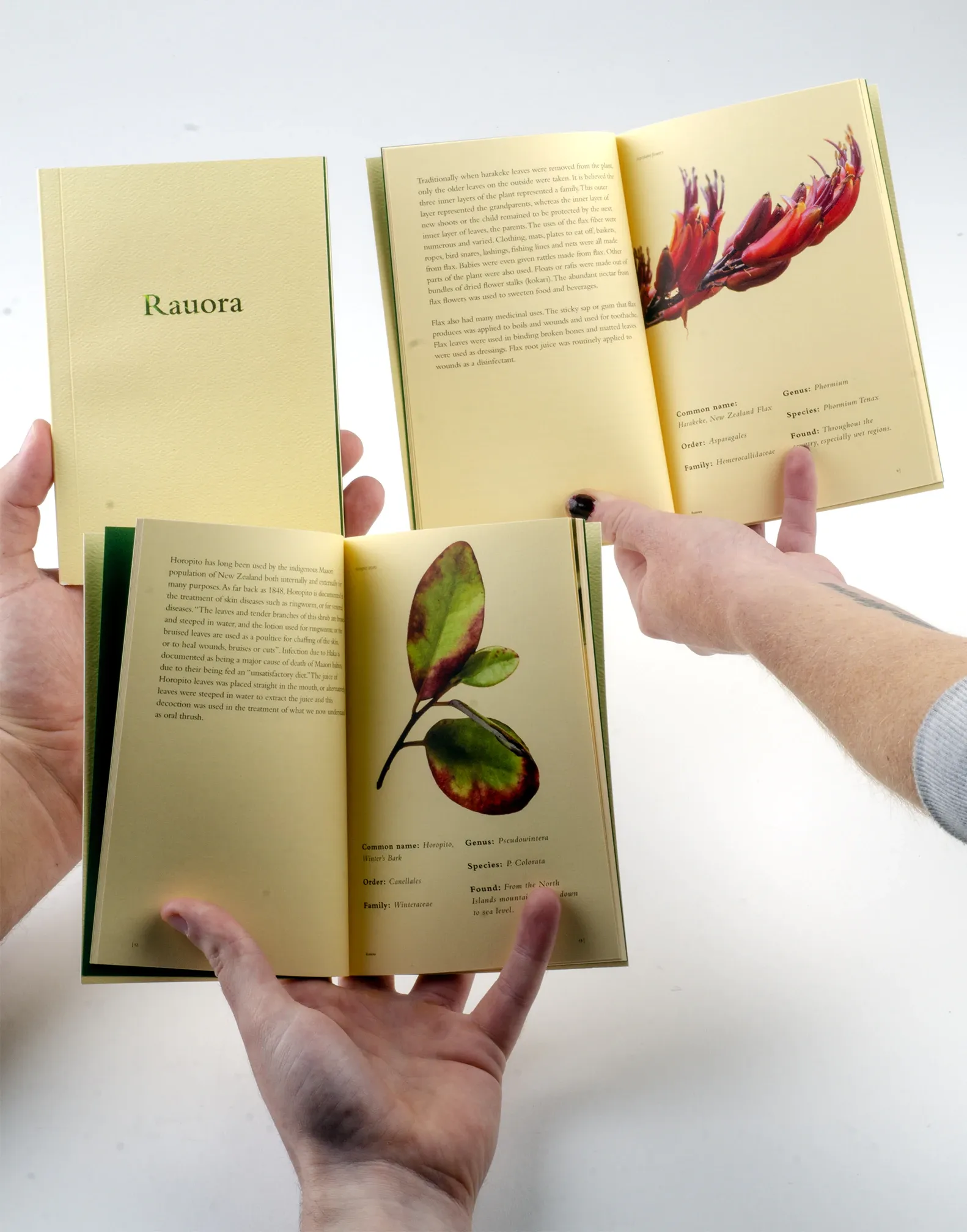Knowledge is in Your Hands
Written by

Not all forms of learning are purely academic. And just as importantly, not everyone wants to learn only through the study of historical precedent.
Getting a high school education is unquestionably important but the rigid, structured style of learning can have its limitations for some.
You can include aspiring graphic designer Tikirau Jermaine-Rhyd Neavin Hathaway in that group. But upon completion of his secondary school education, he found a place that better suited his learning aspirations.
“Unitec was one of the only places I was drawn to, and that's due to the fact that I attended an Open Day there. I got to meet most of the lecturers that day and they were all really cool and welcoming.
“I noticed that the lecturers really wanted to help students one on one, they love assisting in as many ways possible that wasn't intrusive, or overbearing. That's really refreshing compared to High School, where everyone is doing the same thing, but differently and teachers aren't trained to handle one on one situations.”
Hands on

Tikirau Jermaine-Rhyd Neavin Hathaway and friends, Te tātai o Matariki exhibition, 2019. Photo: Emma Smith.
Hathaway’s a perfect example of the type of student that thrives in Unitec’s School of Art and Design, recently graduated from the Bachelor of Creative Enterprise degree. The teaching approach is hands-on and the education received is as well - quite literally.
Emma Smith, the Contemporary Arts Discipline Lead states the Bachelor of Creative Enterprise and Master of Creative Practice programmes are “very much focused on doing. Studio environments contextualise and embed practice-based research. Making, assessing, seeing what’s working and doing more in response to what’s found in the process of making is critical. That’s attractive to students because it’s fun and it solidifies the learning and practical outcome.”
Unitec’s Design Discipline Lead William Bardebes continues “There's no use spending a whole course thinking, planning and reading and making something at the end. It's only once you see something that it tells you what it needs to change and get better so we put making at the very heart and the very beginning of all practices.
“What we are facing, and what all education is facing at the moment in terms of the modern age is learning via a computer is almost a redundant activity because these students are digital natives. What we're trying to do is to invert the experience and let the students know their knowledge is in their hands and in their eyes. We really are community-focused in terms of our practice.”
Local knowledge
Bardebes says that was particularly true for Hathaway, who used his local expertise of the Coromandel to create a pocket guide to some of Aotearoa’s native medicinal flora during his final year of study, now being entered into the Design Institute of New Zealand’s Best Awards.

Pages from Rauora publication, Tikirau Hathaway, 2019. Photo: William Bardebes.
Hathaway explains “Rauora was designed to be a first pocket edition guide to guide those travellers and explorers who wanted to take their knowledge off the beaten path down where a smartphone gets you only a flashlight or a compass. Also allowing those who are interested in learning about these plants to start small and not be intimidated by large glossaries that wouldn’t be suitable for the outdoors.”
Of course, creating a book on native flora isn’t everyone’s cup of tea, Bardebes says “it’s a matter of us helping find the students’ centres of interest and where their heart and practice lies, then applying the presets of design practice directly to how our students see the world.”
Smith sees it as important to let the students create their own path. “First year is structured to help students find what works for them in practice and in process. Second and third year build on specialist practice and students are supported to explore their own interests, technically and conceptually. It’s incredibly gratifying to realise something that is self-driven.”

Inter. Graduate catalogue 2019 designed by Tikirau Hathaway.
Tools to learn the trade
The student learning experience has been enhanced by freshly revamped workshop premises. Both Smith and Bardebes are thrilled to have their considerable resources under one roof, instead of being scattered around campus.
There’s a Photographic studio with a giant cyclorama; darkroom space; printmaking studio for screen printing, mono-printing and others; wood manufacture and metalwork facilities; CMC routers, 3D printers, Mac labs, a kiln room for ceramics and other teaching spaces. All are designed to encourage peer to peer learning and to provide opportunities for students to find new ways to unleash their creativity.

Saynab Muse, Photoforum Booklaunch, 2019. Photo: Emma Smith.
Smith says “it’s a case of you don’t know what you enjoy or if you’re good at something until you have the opportunity to try it. It’s a delicate balance between helping a student get really good specialist knowledge in an area they want but also exposing them to some modes of practice they may not be familiar with.”
Written in partnership with Unitec Institute of Technology. To find out more about the Art and Design in the School of Creative Industries and how to apply, click here.



